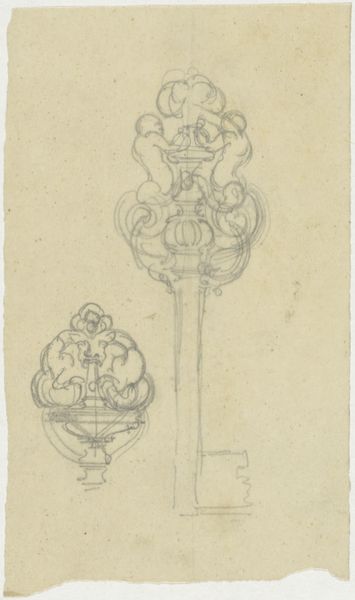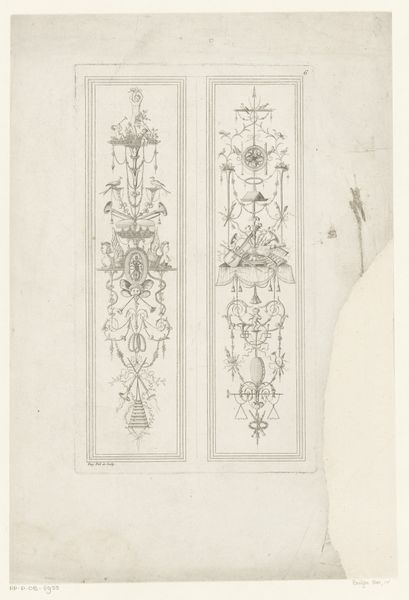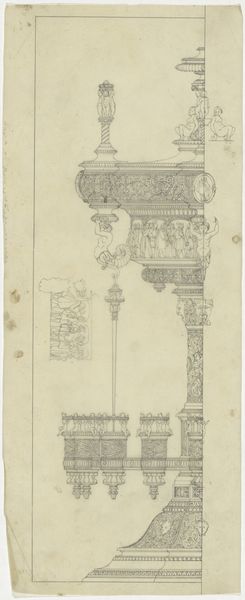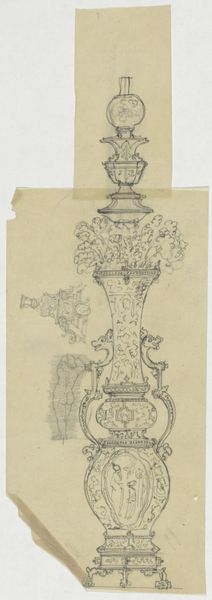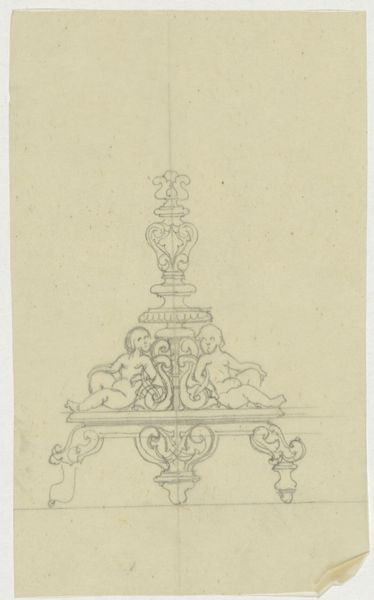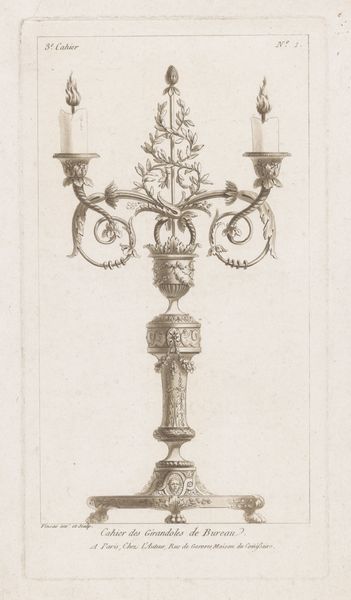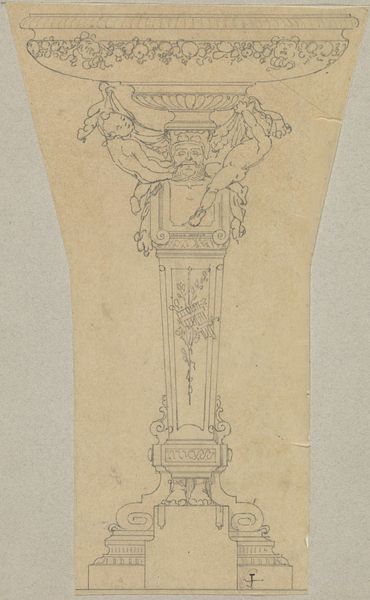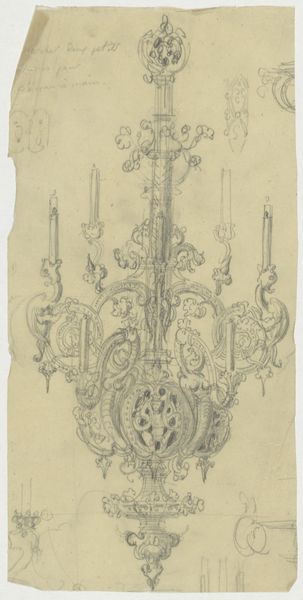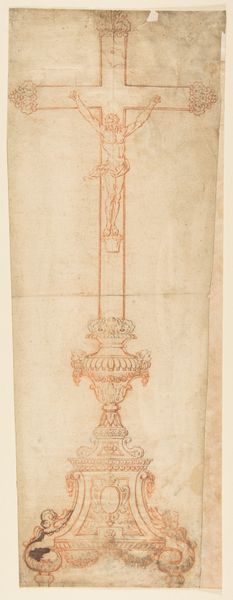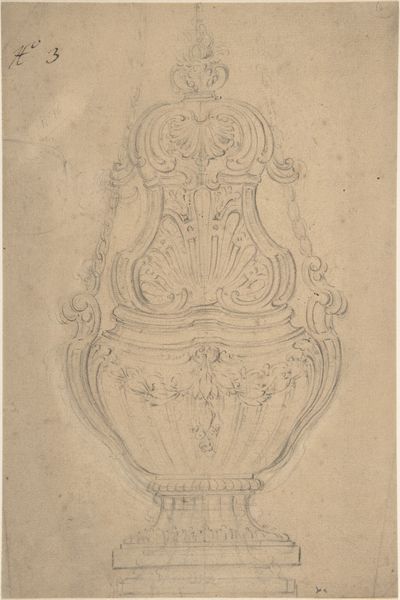
#
aged paper
#
toned paper
#
light pencil work
#
ink paper printed
#
pencil sketch
#
old engraving style
#
personal sketchbook
#
sketchbook drawing
#
watercolour illustration
#
sketchbook art
Dimensions: height 332 mm, width 155 mm
Copyright: Rijks Museum: Open Domain
Philippe Caffieri the Younger made this design for the base of a crucifix with graphite. The drawing is from 18th-century France, a time when the Catholic Church was a major patron of the arts, commissioning elaborate religious objects to reinforce its spiritual and political authority. Note the intricate, ornate detailing, typical of the late Baroque style, emphasizing grandeur and emotional impact. Caffieri was from a dynasty of sculptors. They were connected to the Royal court and deeply involved in the Académie de Saint-Luc and the Académie Royale, institutions which shaped artistic production. The design reflects the social hierarchy of the time, where the aristocracy and clergy enjoyed immense power and wealth. The crucifix, prominently displayed in churches, served as a potent symbol of religious and social control. To understand the role of art in 18th century France, we need to look at documents from the French Royal Academy, guild records, and inventories of church property. These sources help us appreciate the complex relationship between artistic expression, religious doctrine, and social power during this era.
Comments
rijksmuseum about 2 years ago
⋮
This is a design for the base of a crucifix intended to adorn an altar, flanked by six candlesticks of the same model. It is in the early neo-classical style, a reaction against frivolous rococo. Many motifs are also found on the altar set of gilt bronze made in 1760 for Notre Dame cathedral in Paris by the famous Philippe Caffieri.
Join the conversation
Join millions of artists and users on Artera today and experience the ultimate creative platform.

